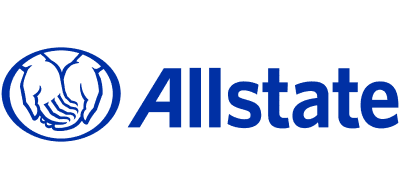Best cheap home insurance in Philadelphia in 2025
Powered by Coverage.com (NPN: 19966249)
The best home insurance companies in Philadelphia
According to Bankrate’s research, USAA, Erie, Allstate, State Farm and PURE may be some of the best home insurance options in Philadelphia. While price is an important decision factor for many homeowners, it is not the only thing to think about when choosing an insurance company. To find the best home insurance companies in Philadelphia, our team considered average rates, coverage options, discounts, financial strength scores, J.D. Power rankings, accessibility and more. We converted these metrics into our proprietary Bankrate Score out of 5, and only chose providers with scores of 3.0 and above.

Bankrate Score
Avg. annual premium
$300K dwelling coverage
JD Power
Bankrate Score
Avg. annual premium
$300K dwelling coverage
JD Power

Bankrate Score
Avg. annual premium
$300K dwelling coverage
JD Power
Bankrate Score
Avg. annual premium
$300K dwelling coverage
JD Power
Bankrate Score
Avg. annual premium
$300K dwelling coverage
JD Power
Not rated
Bankrate's trusted insurance industry expertise
Read our full methodologyThe insurance market can be complicated, but Bankrate's insurance editorial team used our unique perspective to bring readers the information they need to make educated decisions when shopping for a policy.
78
years of industry experience
9
licensed staff
34.5K
ZIP codes examined
120
carriers reviewed
The cheapest home insurance companies in Philadelphia
The cost of living in Philadelphia is slightly above the national average, which may tighten some homeowners’ insurance budgets. To help homeowners find affordable rates, Bankrate’s insurance editorial team compiled average rates from the cheapest home insurance companies in Philadelphia.
|
|
|
|
|---|---|---|
|
$78
|
$934
|
|
|
$81
|
$966
|
|
|
Cumberland Mutual Fire
|
$101
|
$1,214
|
|
$130
|
$1,560
|
Compare home insurance rates
Answer a few questions to see personalized rates from top carriers.
Powered by Coverage.com (NPN: 19966249)
How much is home insurance in Philadelphia, PA?
The average cost of homeowners insurance in Philadelphia is $1,758 for a policy with a $300K dwelling limit. This puts Philadelphia home insurance costs 41 percent more than the statewide average of $1,245. Philadelphia is the largest and most densely populated city in the state, and typically, insurance risks are higher in areas with greater population density. Being one of the oldest cities in the nation doesn’t help — historic homes can be expensive to maintain.
Knowing the citywide average can help you set expectations about what you’ll pay for your policy. Still, home insurance rates are unique to the homeowner. Different rating factors like your credit, home age and deductible can all affect what you pay for your home insurance.
Philadelphia rates by credit tier
In Pennsylvania, home insurance companies are allowed to look at your credit rating when setting your insurance premium. In most cases, homeowners with good or excellent credit get the cheapest rates, while those in the average or poor credit tiers usually pay more. If you’re struggling with high home insurance costs, taking the steps to build up your credit could help you get a lower rate. Even a moderate increase in your credit score could help you see a big difference when your policy comes up for renewal.
|
|
|
|
|
|
|---|---|---|---|---|
|
$6,054
|
$1,369
|
$934
|
$301
|
|
|
$2,595
|
$1,091
|
$966
|
$771
|
|
|
Cumberland Mutual Fire
|
$3,256
|
$1,361
|
$1,214
|
$1,087
|
|
$4,075
|
$1,830
|
$1,560
|
$1,136
|
|
|
$4,929
|
$2,006
|
$1,618
|
$1,121
|
Philadelphia rates by home age
Generally, newer homes are seen as lower risk by insurance companies and may be cheaper to insure. Older homes, especially ones with older roofs, could be more prone to damage. Aging homes may also have older electrical systems and corroded pipes, which often leads to the need for a pricey system overhaul. Even standard CPVC pipes may cost up to $3 per linear foot to replace. Plus, in Philly, if the plumber notices code violations while making a fix on an older home, they are required to bring the property up to modern standards during the project. That can get very expensive. The median home age in Philadelphia is 93 years old, which could make home insurance more expensive for some homeowners.
|
|
|
|
|
|
|
|---|---|---|---|---|---|
|
$1,302
|
$1,168
|
$1,155
|
$1,031
|
$827
|
|
|
$1,377
|
$1,398
|
$1,355
|
$1,154
|
$890
|
|
|
Cumberland Mutual Fire
|
$1,330
|
$1,330
|
$1,330
|
$1,317
|
$1,139
|
|
$1,852
|
$1,852
|
$1,852
|
$1,816
|
$1,395
|
|
|
$2,424
|
$2,320
|
$2,364
|
$2,163
|
$1,342
|
Philadelphia rates by deductible amount
When you’ve exhausted every other option, consider raising your home insurance deductible for a lower premium. Your home insurance deductible is the amount of money you are financially responsible for after you file a covered claim. For example, if your deductible is $1,500 and you file a successful claim for $2,000, your insurance company would only chip in $500. The more of the financial responsibility you shift away from the insurance company, the cheaper your rate will likely be, but it should be an amount you could reasonably pay in a pinch. In the table below, you can compare average home insurance premiums by deductible from the cheapest home insurance companies in Philadelphia.
|
|
|
|
|
|---|---|---|---|
|
$918
|
$902
|
$824
|
|
|
$883
|
$883
|
$771
|
|
|
Cumberland Mutual Fire
|
$1,214
|
$1,096
|
$991
|
|
$1,428
|
$1,399
|
$1,258
|
|
|
$1,566
|
$1,520
|
$1,309
|
Frequently asked questions
Methodology
Bankrate utilizes Quadrant Information Services to analyze May 2025 rates for all ZIP codes and carriers in all 50 states and Washington, D.C. Quoted rates are based on married male and female homeowners with a clean claim history, good credit and the following coverage limits:
- Coverage A, Dwelling: $150,000, $300,000, $350,000, $450,000, $750,000
- Coverage B, Other Structures: $15,000, $30,000, $35,000, $45,000, $75,000
- Coverage C, Personal Property: $75,000, $150,000, $175,000, $225,000, $375,000
- Coverage D, Loss of Use: $30,000, $60,000, $70,000, $90,000, $150,000
- Coverage E, Liability: $500,000
- Coverage F, Medical Payments: $1,000
The homeowners also have a $1,000 deductible, a $500 hail deductible and a 2 percent hurricane deductible (or the next closest deductible amounts that are available) where separate deductibles apply.
These are sample rates and should be used for comparative purposes only. Your quotes will differ.
Credit: Rates were calculated based on the following insurance credit tiers assigned to our homeowners: “poor, average, good (base) and excellent.” Insurance credit tiers factor in your official credit scores but are not dependent on that variable alone. The following states do not allow credit to be a factor in determining home insurance rates: California, Maryland, Massachusetts.
Year built: Rates were calculated based on the following years built for homes and assigned to our homeowners: “1959, 1982, 1992, 2010, 2016 (base) and 2020.”
Bankrate Score
Our 2025 Bankrate Score considers variables our insurance editorial team determined impact policyholders’ experiences with an insurance company. These rating factors include a robust assessment of each company’s cost of coverage, product availability, financial strength ratings, online capabilities and customer and claims support accessibility. We grouped these factors into three essential categories — cost and ratings, coverage and savings, and support — which we then weighted in a tiered approach.
Each category was assigned a metric to determine performance, and the weighted sum adds up to a company’s total Bankrate Score — out of 5 points. Our scoring model provides a comprehensive view, indicating when companies excel across several key areas and highlighting where they fall short.
-
Cost & ratings 50%
-
Coverage & savings 30%
-
Support 20%
- Tier 1 (Cost & ratings): To determine how well auto and home insurance companies satisfy these priorities, our team analyzed average quoted premiums from Quadrant Information Services (if available), as well as any of the latest third-party agency ratings from J.D. Power, AM Best, Demotech and the National Association of Insurance Commissioners (NAIC).
- Tier 2 (Coverage & savings): We assessed companies’ coverage options and availability to help policyholders find a provider that balances cost with coverage. Additionally, we evaluated each company’s discount options listed on its website.
- Tier 3 (Support): To encompass the many ways a home insurance company can support policyholders, we analyzed avenues of customer accessibility along with community support. This analysis incorporated additional financial strength ratings from S&P and Moody’s and factored in a company’s corporate sustainability efforts.
